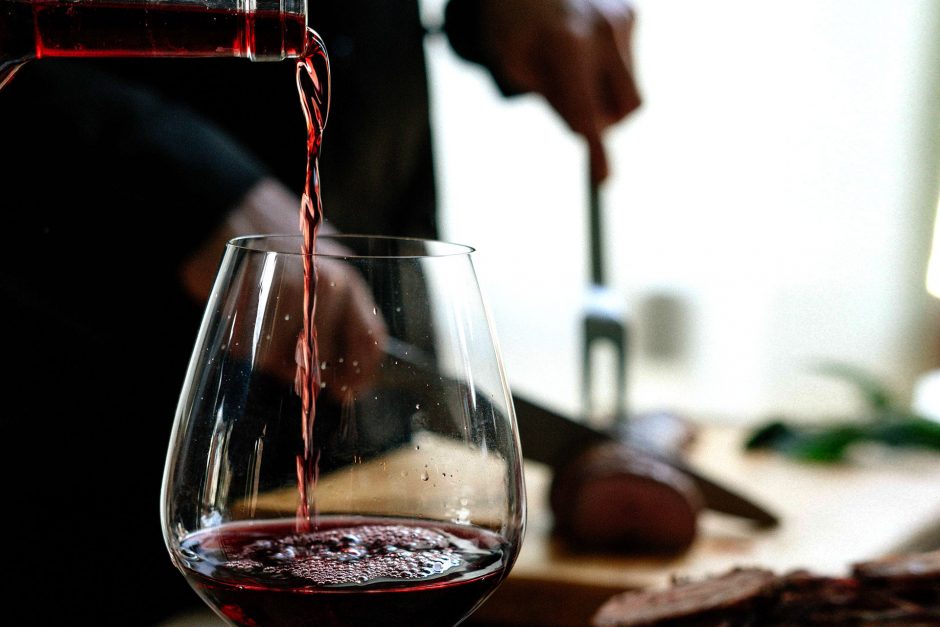Perk Up with 6 Tasteful Malaysian Drinks
Lighten your mood and rejuvenate your senses with 6 must-try Malaysian drinks!
Discover the authentic in Asian cuisine food
Around the World, Tips & Tricks

Light to medium-bodied reds are wines that have less weight (mouthfeel), intensity and alcohol level is in between 12-13.5%. These wines are generally more savoury then their full-bodied cousins with finer tannins and that makes them more agreeable for a wider range of food matching possibilities, especially when it comes to spices, light textures and delicate flavours in food.
The fruit spectrum that you can expect from these wines is from the red spectrum like strawberry, raspberry, red cherry, cassis and cranberries. And the varieties that you will see in this category are Gamay, Pinot Noir, Grenache, Nebbiolo, Lambrusco, Zinfandel and Primativo.
From a production/style perspective, these wines will be picked earlier to preserve fresh fruit and acidity in the wines and they tend to receive less oak treatment and minimal winemaker influence.
Here are some useful tips for each variety and cuisine styles so you can start experimenting and exploring what’s possible when you get the right combination.
When it comes to curries, first consider the texture of the curry. Is it creamy or dry? If you have a creamy curry, try a lighter and finer style like Gamay or Pinot from a cool climate so you can ensure that the acidity in the wine will help cut through the cream and balance out the mouthfeel. If your curry is dry, you may want to think about a wine with a little more tannin so that the weight of both elements match up.
Then consider the protein. If it’s a yellow or green chicken you might want to consider a light red like Lambrusco or Gamay to ensure that the wine doesn’t mask the flavour. If it’s beef, lamb or duck then maybe try Pinot, Nebbiolo, Zinfandel or Grenache. Examples of a dish to pair with are Stir-fry Beef and Veggies, Beef Bulgogi or Korean Chicken BBQ (Dak Bulgogi).
Salads can be amazing with light reds but you have to first consider the lightness of the overall dish, the spice and the dressing. If the dish is light fresh and zingy like a Vietnamese Beef and Watercress Salad or Thai beef salad stick to white. But for salads that have bigger flavours like Sashimi Salad or 5 Ingredient Salmon Soba Noodle Salad, try Pinot Noir and Gamay.
If your dish is BBQ influenced from Korean to Chinese, then Grenache and Nebbiolo are going to be the best place to start. Both varieties can have a sour cherry note to the fruit makeup and these flavours always fit nicely with BBQ’d protein flavours like Grilled Korean Pork Chops, Korean Chicken BBQ (Dak Bulgogi), Chinese BBQ Pork (Char Siu) or Indonesian Chicken Satay.
When thinking about soups and noodle dishes, think about the majority component of the dish first (in these cases it is usually the liquid) then the protein second. If it is a stock-based with beef, lamb or duck dishes like Thai Beef Noodle Soup, Oxtail Soup (Kkori Gomtang) or Pork Ribs Lotus Root and Peanut Soup, then Pinot Noir will always go well. If it’s coconut milk, fish, or vegetable stock-based dishes like Thai Red Curry Pumpkin Soup or Thai Chicken Coconut Soup (Tom Kha Gai), then consider medium to heavy-bodied white wines. Red wines here generally will not fit as they can override and mask subtle flavours that are integral to the overall balance of the dish.
For braises and roasts, the depth of flavours can be broad so you have a lot more to play with here. Think about the dominant components of the braise/roast and go from there. Dished like Braised Pork Trotters (Jokbal), Braised Chicken with Vegetables (Dakjjim) or Teochew Braised Duck. If the braise is heavy and savoury, then try a Grenache or Nebbiolo or even Zinfandel. If the dish has a spice, like Braised Beef with Spicy Oyster Sauce or Spicy Korean Chicken Stew (Dakdoritang), then go for something finer like a Pinot Noir or a Gamay.
A great place to start. Think about the general fruit descriptors for the wine and then consider the flavours in the dish look for components that might compliment. For example, black-fruited wines go great with savoury dishes and sour fruited wines love a little sweetness.
If you have big flavours in your wine you will need big flavours in your food so that the wine does not dominate.
Younger wines generally can have a higher level of acidity. This can sharpen the flavours and can affect the flavour of the food. Acidic flavours can clash with some flavours but the acidity in wine is great for cutting through and balancing out fatty, creamy components of dishes.
Tannins can have a drying effect on the mouthfeel of wine so maybe think about the texture of the dish so that the dish and the wine can complement each other. For example, try oily or creamy rice dishes with wines with pronounced tannins.
To learn more about wine and wine pairing, visit Wine Selectors for more information.

Lighten your mood and rejuvenate your senses with 6 must-try Malaysian drinks!

Pair your hearty barbecues with these refreshing Asian delights!

What are the properties of ginger, and how to pick, store and use ginger in your cooking? Find out here!